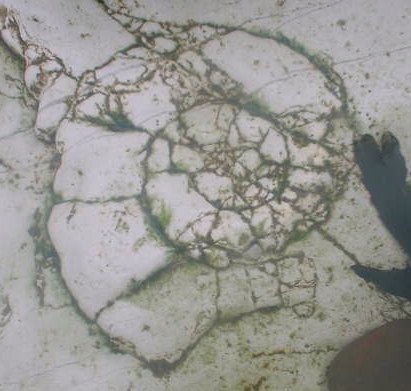
East Yorkshire, U K
by Mike Horne FGS
This ammonite was found in the flinty Chalk of the "Hagenowia rostrata" zone (lower Santonian) at Selwicks Bay, Flamborough Head, East Yorkshire, UK. The diameter is about 20 cm. It was found on the wave cut platform, so the detail of one side had been eroded. It was cracked and so when extracted it came out in many pieces. These will have to be stored in fresh water for several months (or more) to remove the salt before the specimen can be reconstructed. Most of the inner whorls have been lost because they were too fragmented.
Ammonite fossils are rare in the chalk, and even rarer in the Santonian. So this specimen could be quite important. Also it appears to have lapets, though that might be just a peculiarity of its preservation or erosion when exposed.
Here is a picture of the ammonite in situ on the wave cut platform:-

And here is a picture of the external mould left after its removal, showing some of the ribbing (camera lens cap for scale):
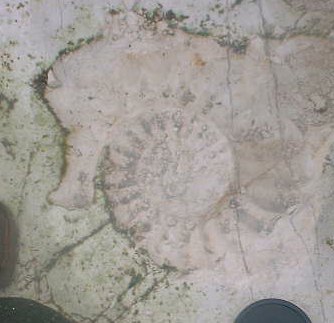
The diameter is about 21 cm. The outer whorl is 7 cm tall at the aperture, and the thickness of the body chamber is over 3cm. There are about 24 coarse ribs on the outer whorl and these have about 4 nodes on each rib. The ribbing does not seem to go over the venter and there does not appear to be a keel. I will add some more details to this page later. This is how the larger pieces fit together:

It has been suggested that it is Texanites
texanus.
Here are pictures of Texanites texanus
texanus (Romer) [drawn from Young 1983] and the new ammonite for comparison.
You can click on them to get a larger picture:
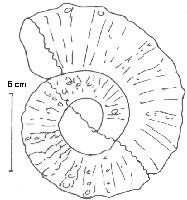
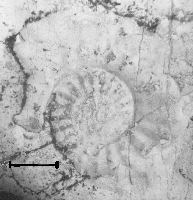
Texanites texanus is an indicator of Lower Santonian Age (Hancock and Kennedy 1980), and this would have implications for the Santionian-Coniacian Boundary in Yorkshire, if the identification is correct. Many authors have placed the boundary at the top of the flints - the boundary between the Flamborough and Burnham Chalk Formations (Whitham 1991 and 1993 for example). Chris Wood (1980) thinks "it is quite likely that the stage boundary falls within the flinty part of the [Hagenowia rostrata] zone". I have thought that the uppermost flints are diachronous, and placed the boundary tentatively just about the Middleton Marl. More recent (unpublished) research has revealed signs of anoxia in the Middleton Marl, perhaps providing evidence for the Coniacian-Santionan anoxic event.
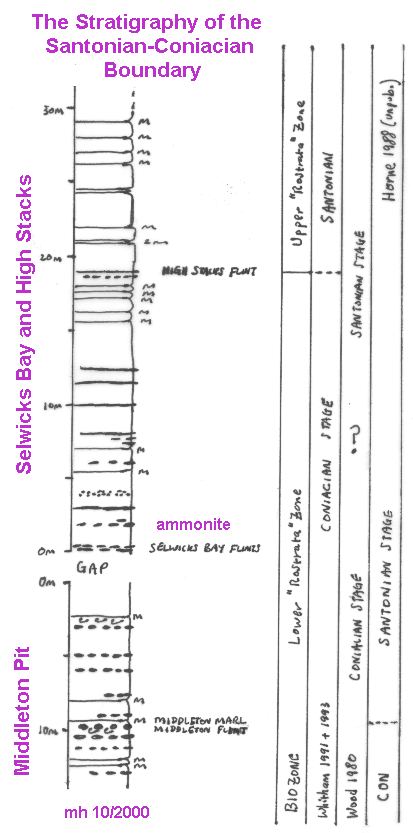
Mike Horne, Hull, U.K.
Many thanks to Gordon Binns for some of the pictures.

